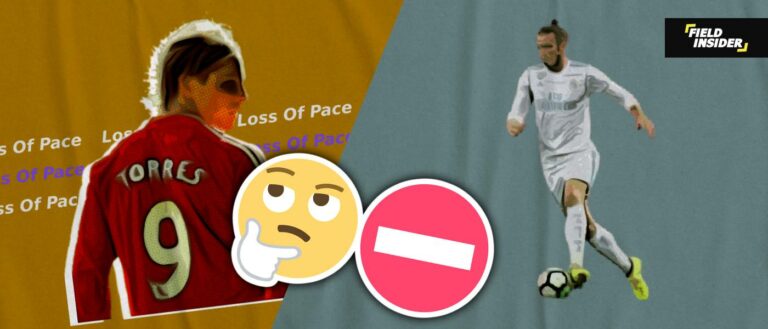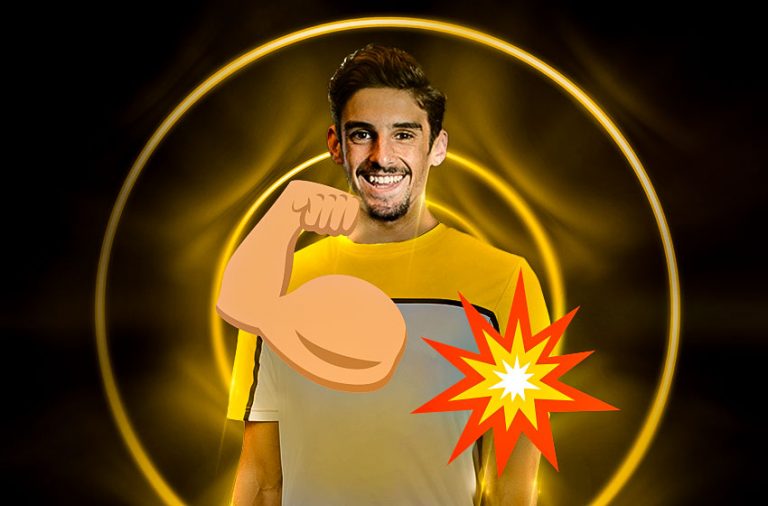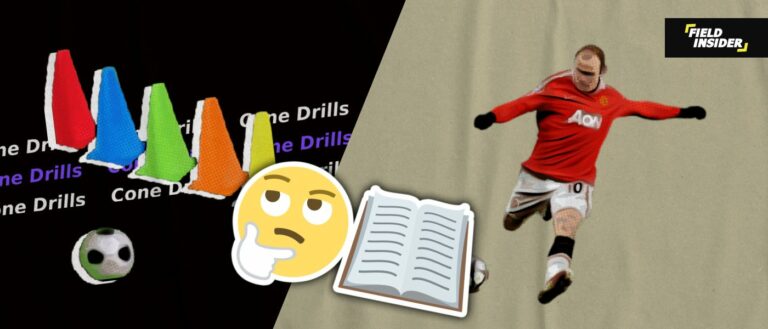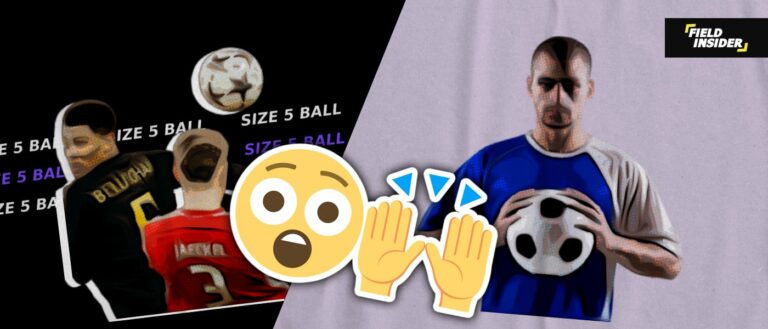How Footballers Get Sponsored? Football Sponsorships & More
The world of football is rife with football sponsorships everywhere you look. From competitions to stadiums to shirt sponsors, clubs are partners with multiple brands.
However, players themselves also have their own individual sponsorship deals. In fact, for the top four sportswear brands; Adidas, Nike, Puma, and Under Armour—60% of their sponsorship deals are with footballers.
When you think of the best players in the world, like Ronaldo and Messi. You’ll immediately associate them with their brands.
The two most notable football sponsorships are Cristiano Ronaldo’s lifetime deal with Nike, worth over $1 billion. And Lionel Messi’s sponsorship with Adidas, which is also a lifetime deal, earns him $12 million per year.
Key Takeaways
| Section | Details |
|---|---|
| Understanding Football Sponsorships | Recognizing their critical role in financially supporting teams and players, while offering brands valuable exposure and association with the sport |
| Types of Sponsorships | Forms of sponsorship in soccer; kit, personal endorsements, and brand partnerships |
| Why Sponsorships | How do footballers and clubs benefit from sponsorships in terms of financial support, and other opportunities? |
| Attracting Sponsors | Roles of performance on-field and persona off-field in getting sponsorships |
| Role of Agents and Managers | How agents and managers are essential for negotiation and finding the right deals. |
| Image Rights | How images rights stands as one of the biggest conflicts in sponsorships |
| Popular Sponsors | Some of the biggest sporting brands in soccer |
What Are Sponsorships in Football (Soccer)?
Sponsorships in football are mutual and consensual agreements between a sponsoring company and football leagues, clubs, or even players where the sponsor provides funds in exchange for marketing exposure and promotional benefits.
Marketing exposure in this instance means access to a wider audience scope. Also, this is achieved in many ways from carrying the company logo on the team’s jersey to using the team’s logo or face of players in advertisement.
Forms of Sponsorships In Football (Soccer)
While some may include sponsorship in terms of production and supply of team/player merchandise such as jerseys and boots, some can cover the use of images on their product such as sports energy drinks.
This is to say, there are different forms in which sponsorships can present themselves. Here are some of the ways.
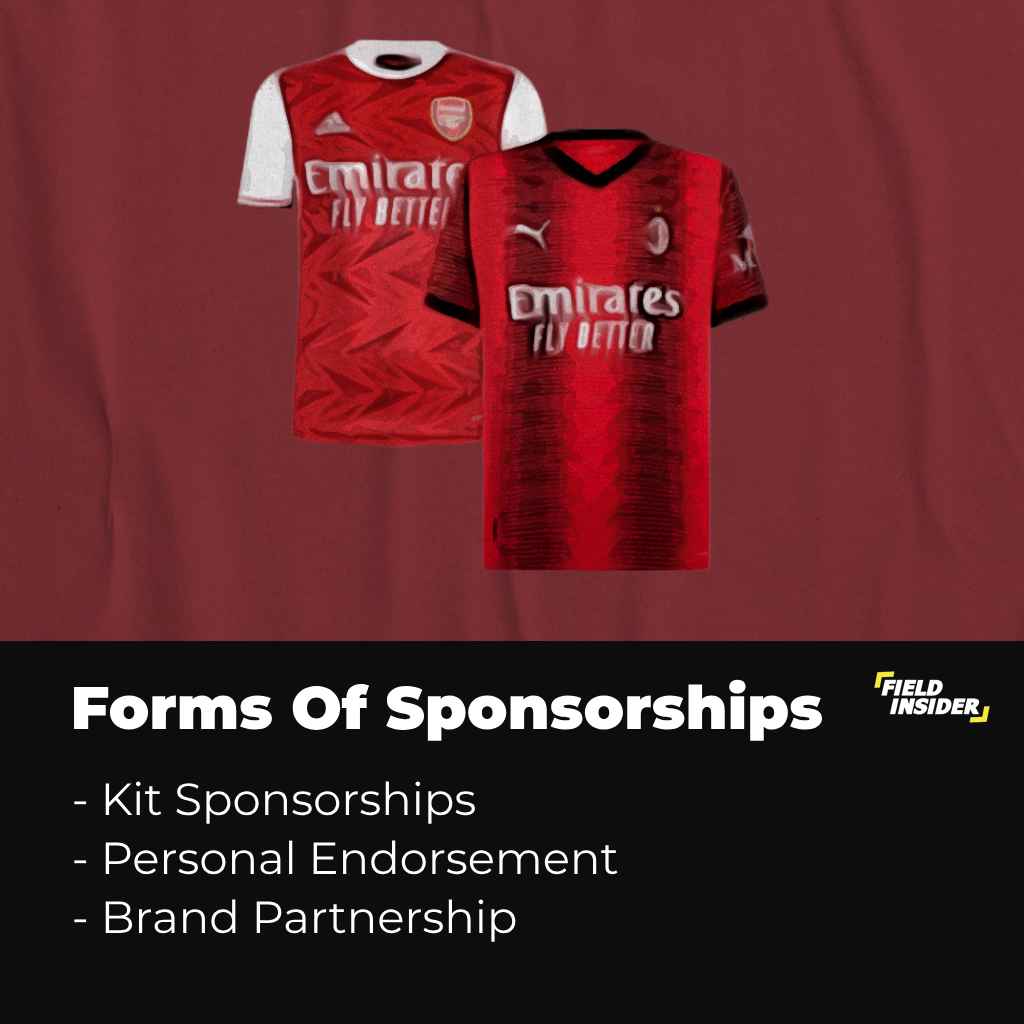
1. Kit Sponsorships
This is a very common aspect of sponsorship with big names such as Nike and Addidas being major sponsors.
In a nutshell, this involves including the brand of the company on the playing kit of the club or player. Thereby, showing a connection between said player/club and the sponsoring company.
For kit sponsorship, the brand often takes up the responsibility of production and supply of such kit for the team or player. Moreover, the club/player will not need to purchase the product and will enjoy a periodic supply of the product.
The most common soccer kit that gets lots of sponsors is soccer jerseys. On soccer jerseys, the logos of the team sponsors. After jerseys, next are soccer boots, beverages, and more.
Sponsorships and Soccer Jerseys
From a report released by Statista, an enumeration of the top football club shirt sponsorship deals as of 2022/23 was given. For the stated soccer season, Real Madrid received the highest sponsorship value for a club shirt.
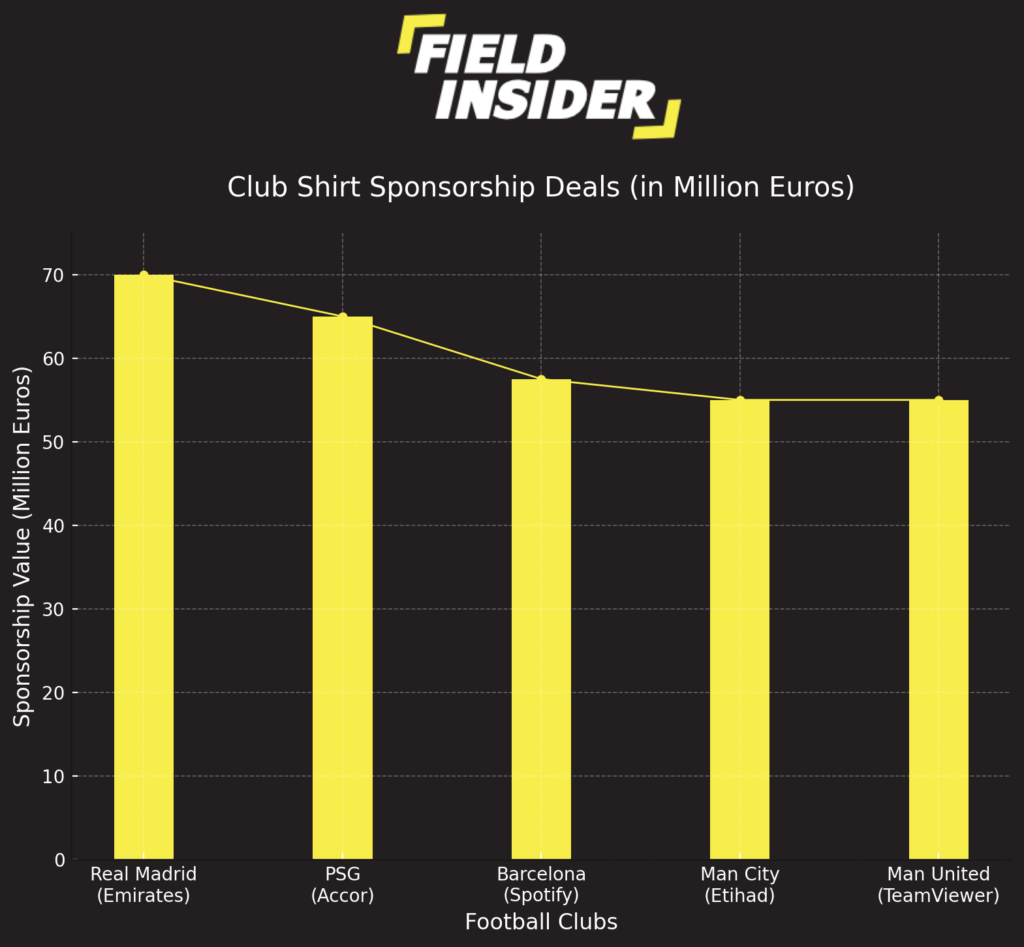
The league made about 70 million euros from their sponsors club jersey, Emirates. Next to Real Madrid is Paris Saint-Germain who earn 65 million euros from there sponsor Accor.
The table and chart shows the different sponsorship values for the popular club in football.
| Football Club | Sponsor | Sponsorship Value (Million Euros) |
|---|---|---|
| Real Madrid | Emirates | 70.0 |
| Paris Saint-Germain | Accor | 65.0 |
| Barcelona | Spotify | 57.5 |
| Manchester City | Etihad | 55.0 |
| Manchester United | TeamViewer | 55.0 |
| Arsenal | Emirates | 47.5 |
| Chelsea | Three | 47.5 |
| Liverpool | Standard Chartered | 47.5 |
2. Personal Endorsements
Personal endorsements are direct sponsorships involving the sponsoring company and a player directly. In this example, a footballer is directly linked to the brand and the brand/company uses the player’s image rights for promotion.
In personal endorsements, it is common for the company to build an entire sub-brand or line of products around the soccer player. A renowned example of this in basketball is the Nike Jordans which is an entire line of Nike shoes.
In football, we also have Adidas Messi, which is a line of soccer boots.
Boot Deals
Firstly, the most common type of personal sponsorship for footballers is boot deals. For players, boots are important for comfort as well as performance.
Obviously, players have to wear the kit of their team. So the boots are the one piece of kit on display during a match that can show individuality and personal taste.
This is why brands battle to sponsor elite players and ensure they exclusively wear their brand and model their new releases in matches.
exclusivity in boot deals:
For many footballers, boot deals include agreeing to wear the brand’s boots for all training and matches. And sometimes include exclusivity of all sports and gym wear.
The players would receive a constant supply of new boots and training wear as part of the deal.
James Milner revealed in his book ‘How to be a Footballer‘ that as part of his sponsorship with Nike, he could request custom-built boots to suit his comfort preferences.
3. Brand Partnership
Unlike kit sponsorship where a company or brand is interested in the kits the players use, the brand partnership goes deeper. In most cases, the company wishes to build its brand around the said club.
Here, the goals of the club/player and the brand meet and they form an alliance where the brand gets its audience and exposure while the club gets its compensation.
Reasons For Sponsorships In Soccer
When looking at the reason for sponsorships, we have to look at if from the angle of its advantage for both soccer players and also football clubs.
Why Do Footballers Need Sponsorships?
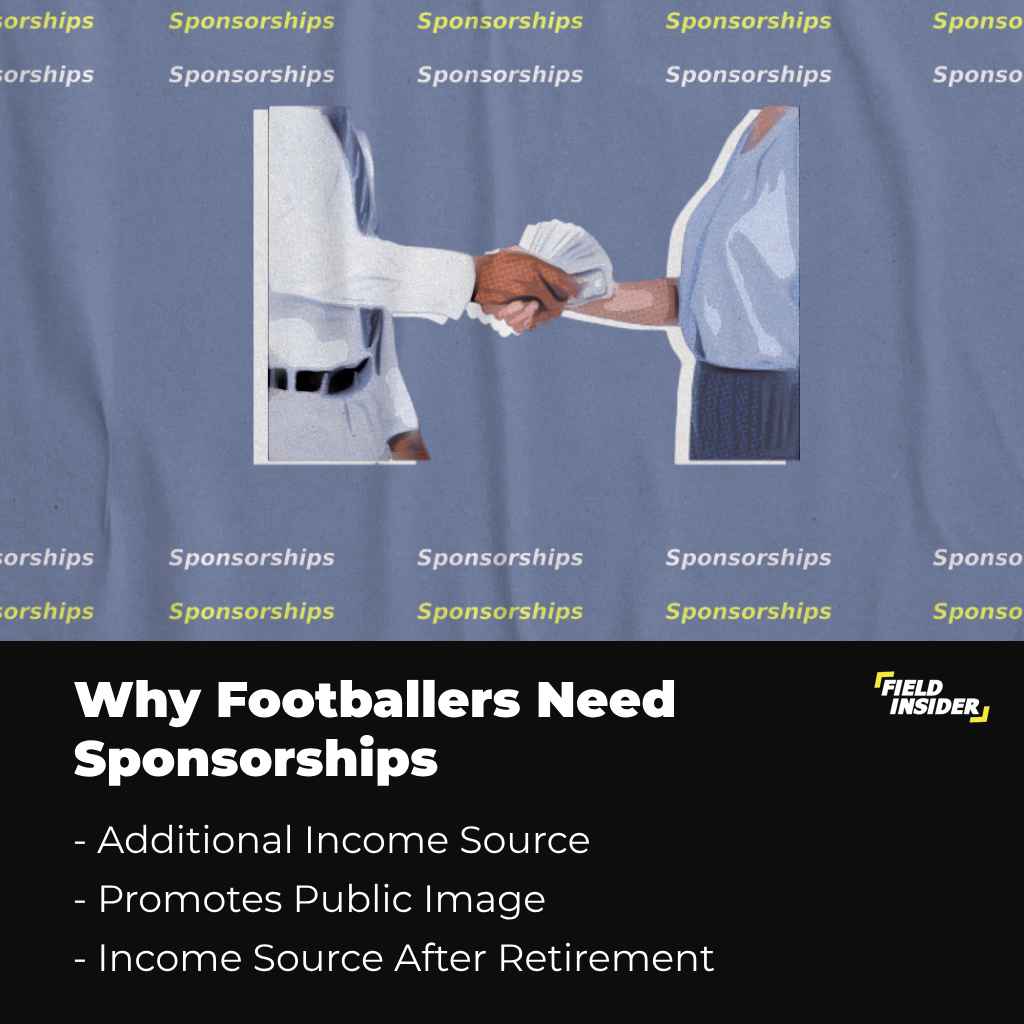
1. Additional Income Source
When footballers get sponsorships from brands and companies, the compensation offers them both an extra source of income outside their salary.
This supplementary income can also last even after they leave their current club, especially when it is a personal endorsement.
Also, they can also offer soccer players investment opportunities, in the sense that they can receive a certain share of the brand after a long period of partnership.
2. Promotes Public Image
Sponsorships are made by brands that build their presence using a well-known soccer player to gain the attention of the public. In the same way, the soccer players who take up endorsements also receives greater audience attention.
Moreover, not only do they have access to a wide fanbase, they also give more credibility to their image. Making it good for them and the brand together.
3. Continued Earning After Retirement
Footballers with sponsorship deals enjoy continued income even after retirement. Since it isn’t related to their involvement in club activities and their on-field performance, it can run for as long as they are alive.
Why Do Soccer Clubs Need Sponsorships?
For clubs, sponsors provide the necessary funds needed to keep the club activities running. The funds obtained from club endorsement are what are used to run some of its activities.
Basically, sponsorships are an essential part of how clubs generate revenue. If a club is unable to find enough sponsorship, it might have to cut some staff and functionalities in order to make up for the deficit.
Clubs also fall the risk of completely folding up if they are unable to get enough sponsors.
What Attracts Sponsors To Football Players?

The on-field and off-field presence of soccer players are the major factors that attract sponsors to them.
On-field performance is all about the player’s excellence on the field as well as records and achievement in football synonymous with the said player.
The more successful the player is on the field, the more sponsors and the bigger the sponsorship attracted to the player.
In addition to the player’s performance, the level of consistency to which soccer players deliver is also crucial. This is because sponsors require that players they are affiliated with are not one-time successes.
As for players’ off-field persona, this involves footballers’ social media presence [Instagram, Facebook, X(formerly Twitter)], personal brand, and activities they are involved in when not playing the sport.
How do Footballers first get Sponsored?
When a footballer first starts playing professionally on big stages like the EPL, La Liga, or UCL, they are most times without any brand. In this case, they mostly abide by the brands sponsoring the club they play for.
Here, the club would have a supply of the kits that each player on its roster would need. However, once players become established and well-known in the game, brands would likely approach the player’s agent to strike a deal.
Brands such as Nike and Adidas have dedicated talent spotters and recruitment plans to find young talent to sign them up on long-term sponsorship deals before their competitors.
For example, Nike has a sponsorship deal with legend Patrick Kluivert’s youngest son.
Who is playing for FC Barcelona’s youth system at 14 years old? These ‘Young Athlete’ contracts are investments in the future. As Nike would hope they are partnering with the future global superstars.
For the Elite Players
These types of football sponsorships are often a lot more than just boots and training gear. When you’re a global superstar.
Messi, Ronaldo, Pogba, or Salah in TV adverts for certain brands, and this is usually part of the deal for an ambassadorial role.
This kind of football sponsorship would include promotional appearances, social media work, photo shoots, and ads, as well as using a wide variety of products such as bags, watches, accessories, and even toiletries and aftershaves.
It’s not that the player would have to actively promote all of these products, but the deal would prevent the player from signing any other sponsorship deal with any other brand that wants the player to promote these products.
who negotiates these deals? (Roles of Agents and Managers)

Sponsorship deals are identified and negotiated by agents and managers. They also sure that the sponsorship to be taken by a player is in line with the player’s brand and future prospects.
These also ensure that such an all-encompassing boot sponsorship from giant brands like Nike, Adidas, and Puma is not detrimental to the earning potential of the player.
This is because, for the global superstars in football, the offers for sponsorships come from far and wide, involving pretty much any product.
For most professional players, a boot and jersey deal is the only type of sponsor they have. Those with a slightly higher profile or social media following may have ambassadorial roles with football or sport-related brands.
Some of these may include nutritional brands, or EA Sports, which represent the FIFA video game.
Leo Messi
An example is Lionel Messi. He has had sponsorship and endorsement deals with companies such as Mastercard, Turkish Airlines, and Pepsi. In recent years, elite footballers have become as popular as traditional celebrities, meaning endorsements from them have become very valuable to global brands.
Why Are football sponsorships so lucrative?
In the realm of football sponsorships, the primary factor is exposure. The extent to which players appear in televised games, particularly those with high viewership, greatly influences the interests of sponsoring brands.
This focus on visibility is precisely why many football sponsorship agreements incorporate performance-related bonuses.
The most substantial sponsorship deals are generally reserved for players who are part of elite ‘category 1 clubs’.
These clubs, including renowned teams like Real Madrid, FC Barcelona, Manchester United, Paris Saint Germain, Juventus, and Bayern Munich, are distinguished by their global following and participation in premier football events.
For a player to qualify for these premium bonuses, there are specific performance thresholds to meet. They are required to participate in at least 70% of their team’s competitive matches.
Additionally, maintaining a steady presence in national team selections is a crucial criterion for receiving these bonuses. This structure underscores the emphasis on consistent high-level play and visibility in both club and international football arenas.
performance of the clubs
Even the performance of the club affects the player’s income, even though it isn’t directly in their control.
For example, Tottenham missed out on Champions League football this year, meaning it is likely that Harry Kane missed out on income from his Nike deal.
Alternatively, winning the Champions League or World Cup would provide a healthy bonus to a player from their sponsor.
Social Media Ads
However, these days exposure doesn’t just come from being seen on the football pitch, playing in the sport’s biggest games.
Social media is now the predominant media for advertisements and promotions, and the most popular football players are making money from their followers.
Cristiano Ronaldo has around 500m followers on Instagram, so there’s no wonder his sponsorship deals include social media posts. It is reported that he can earn $1 million for a single post, such as one promoting his partnered brand, Clear Shampoo.
What about the Money they make for their Sponsors?
Well, the interesting thing about Messi and Ronaldo is that the kits they wear for their club are not the same as the brands they are ambassadors for.
In fact, while he has a lifetime contract with Adidas, Messi actually generated an estimated $111 million in revenue for Nike in 2017-18, due to social media exposure in his Barcelona kit as well as in Barcelona shirt sales.
For the two companies, promoting their key assets in Messi and Ronaldo is complicated, considering that they would want to avoid images of their star in their competitor’s kit.
As such, brand consistency is a very valuable thing for football sponsors. For example, Mbappe is a Nike athlete who also represents Nike for PSG and France. This means he can become a complete icon for the brand.
Image Rights
Where there are multiple brands involved, football sponsorships can become complicated, particularly when considering image rights. High-profile players are usually signed to an image rights company in which they are majority shareholders.
The company owns the player’s entire image – look, name, nickname, voice, endorsement, and so on. This company enters into a contract with the club and also usually deals with boot deals and other sponsorships.
If the football club wants to use the player to promote their other commercial sponsors then deals must be struck with the image rights company.
There can be conflicts of interest where the player could have personal sponsorships that are competitors to some of the club’s partners.
image rights; conflict with clubs
Clubs will often restrict their players from making deals with such companies. However, this can be difficult for players transferring who may have existing deals with, say, Mercedes, but their new club has Audi as their shirt sponsor.
This makes contract agreements between image rights companies and football clubs complicated, which can delay things and often involve the club paying compensation for the player to drop or limit their sponsor opportunities.
Elite clubs can have more than 60 commercial partners, so the chance of conflicts with player endorsements is pretty high.
It was reported that Tottenham failed to sign Dybala on transfer deadline day in large part due to the delays caused by image rights issues that could not be resolved in time.
Popular Sponsors In Football
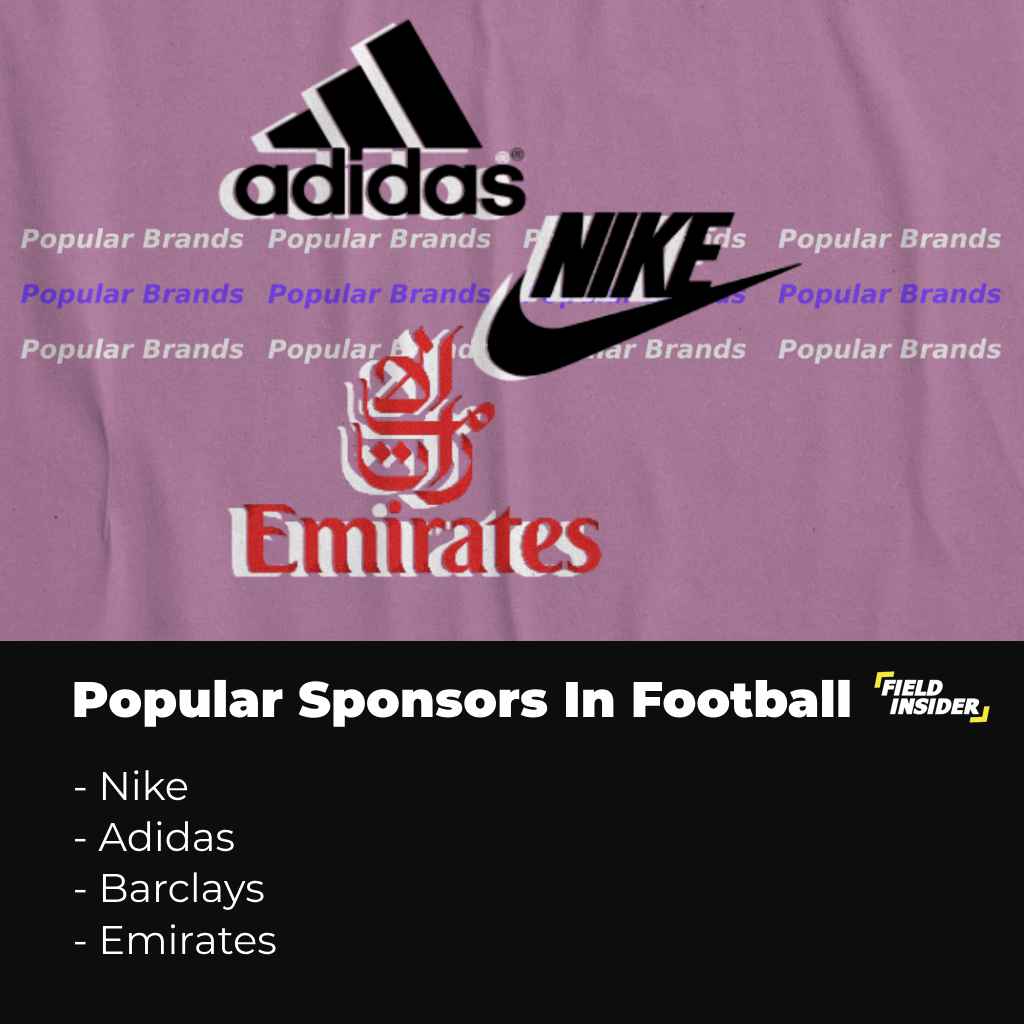
Many popular sponsors are in football and these include:
- Nike: It is one of the biggest sponsors in soccer majorly covering soccer kits like jerseys, socks, and boots. Some of the clubs they are in partnership with include; FC Barcelona, Paris Saint-Germain, Chelsea FC, etc.
- Adidas: They are the major competitors with Nike in the position of the biggest soccer brand. Just like Nike, they also cover soccer jerseys and kits like soccer boots. Some of the teams they sponsor include Real Madrid CF, Manchester United FC, FC Bayern Munich, etc.
- Puma: Just like the first two brands, Puma is also involved in soccer kits and stands as a partner with teams like AC Milan, Borussia Dortmund, Olympique de Marseille, etc.
- Emirates: From soccer kit sponsors to airlines, we have Emirates. Emirates is one of the world’s most popular luxurious airline travel companies in the word and they are proud sponsors of Arsenal FC, Real Madrid CF, AC Milan, etc.
- Barclays: These are the major sponsors of the Premier League. Their partnership with the Premier League is so deep that the EPL is sometimes referred to as the Barclays Premier League. They are a British universal bank that has been with the league for over 20 years.
| Other Sponsors | Clubs and Leagues They Sponsor |
|---|---|
| Qatar Airways | AS Roma, Boca Juniors |
| MasterCard | Sponsors of the UEFA Champions League |
| Audi | FC Bayern Munich, FC Barcelona (past sponsor), Real Madrid CF (part of the Audi Cup) |
| Hyundai | Chelsea FC, AS Roma, Atlético de Madrid |
| Rakuten | FC Barcelona (main shirt sponsor) |
Conclusion
In modern football, sponsorships are essential to a player’s career. Players now are recognized for their unique personalities and charisma, heavily amplified by social media. This dynamic has significantly increased their marketability.
Players like Pogba, Neymar, Ibrahimovic, and Ronaldo are at the forefront of this trend, bringing substantial value to the brands they represent.
Looking forward, the prominence of these elite players in advertising – from TV ads to billboards and social media like Instagram – is likely to increase, reflecting their growing influence in the sport’s marketing landscape.



